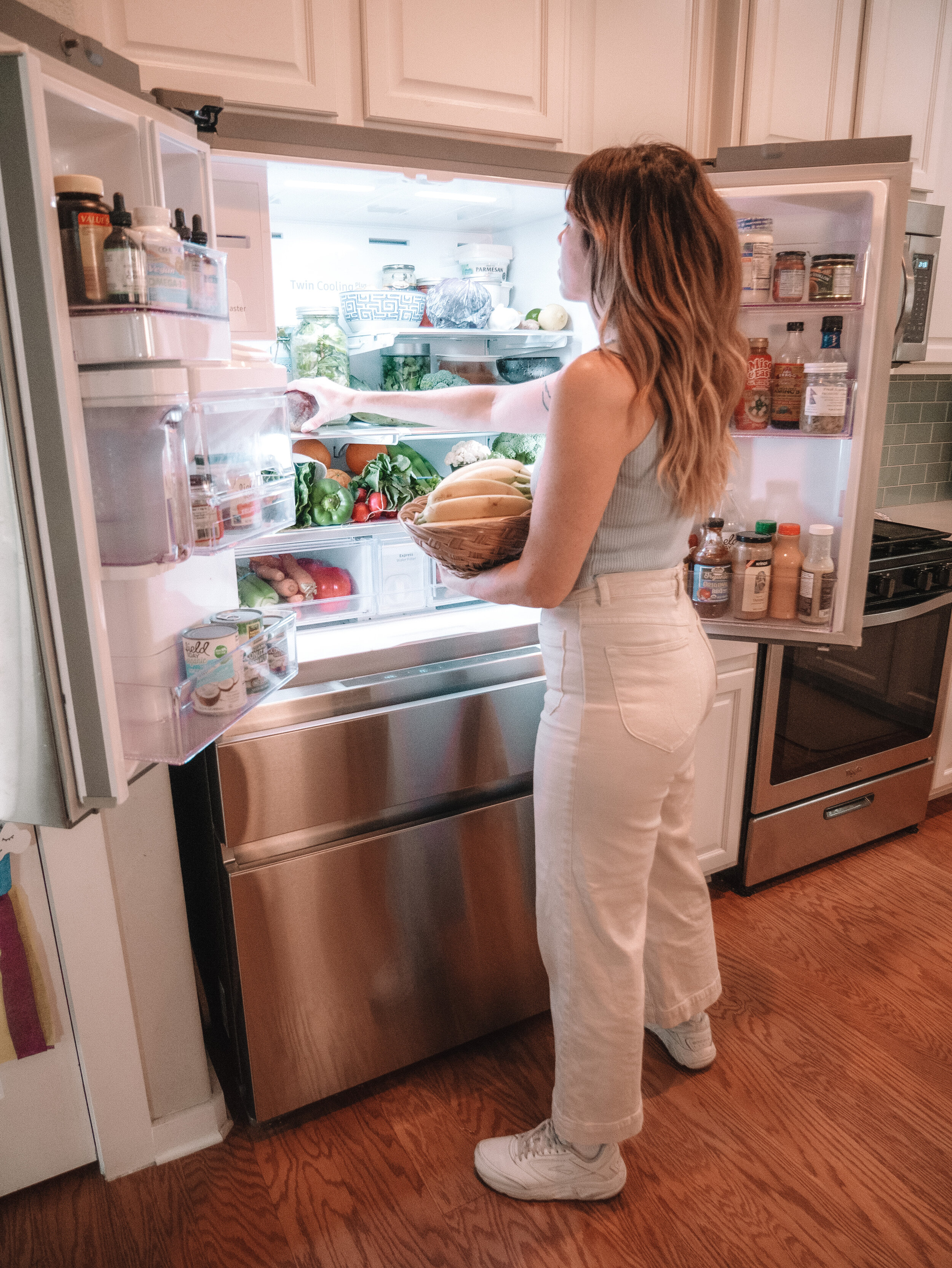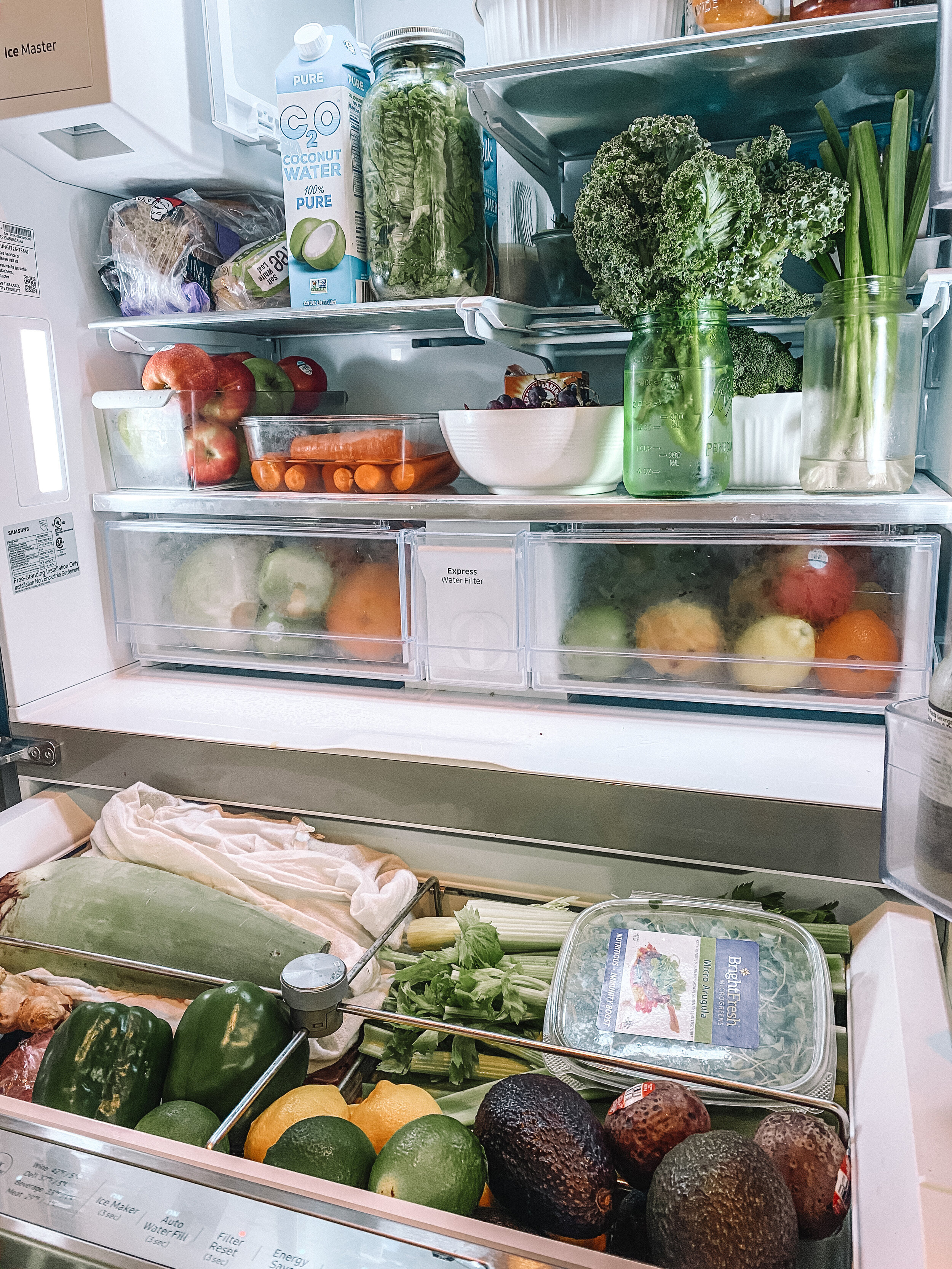Creative Ways to Reduce Food Waste and Save Money
Let’s talk about proper food storage! It took me a long time to realize how much food goes to waste in our home. Once we decided to create a solid budget for our household, I became more mindful of how much food we ended up throwing out. I believe that no matter what your budget is, being aware of your food waste not only helps you save money, but also conserves energy and leaves less of a carbon footprint.
Did you know that 1/3 of the food that American’s buy ends up being thrown away? That food is then, tossed in our landfills, creating more methane gas in our atmosphere and further exacerbating global warming.
In this post, I’m going to share with you simple ways that you can save money, preserve your food longer, and decrease your overall impact on the environment. If you want to learn more about budgeting and meal ideas, check out my blog post, Ultimate Guide to Going Vegan on a Budget.
Organization:
How many times have you reached for something in your fridge only to find spoiled food and you have no idea when you made it? Or are you constantly sifting through your pantry, miss an extra box of pasta, then end up buying more than you need on your trip to the grocery store? By simply organizing your pantry and fridge, you can stay on top of your inventory, save money, and maintain your sanity. Typically, I spend a few minutes every couple of days re-organizing our food to try and catch anything that might be expiring soon.
Grocery Store planning:
-Make a list of your favorite meals along with their ingredients, that way you can take the guesswork out of what to shop for and prepare for the upcoming week.-Check your inventory beforehand so you don’t end up with more food than you need.
-You’ve probably heard this before, but here’s a hepful reminder, never go grocery shopping hungry. This will impede your ability to say NO to the extras. Remember, we’re trying not to waste food and save money, right? If you buy extra snacks, you’ll most likely eat them first and let your fresh goods go to waste in your fridge. If you need a quick snack, you can always reach for fresh fruit, a smoothie, or a veggie and hummus plate.
-Don’t forget to keep your reusable grocery bags in your car
Food Storage Containers:
This one has been really fun for me for some reason. When grocery shopping, I try my best to purchase things in glass jars such as yogurt, pasta sauce, nut butter, etc, so that I can use them for storing food later. I’d recommend you opt for mason jars, which are pretty affordable online, or usually available at your local thrift store. Having these jars around makes for easy and versatile storage containers. You can find them here.In addition to jars, clear glass storage containers are a great way to keep tally on your leftovers because you can easily see inside them. You can find my favorite glass containers here. These containers are great for reheating in the microwave or oven (without the lid) and they’re great for taking with you for lunch.
Last but not least, are stasher bags. These are a great alternative to plastic bags as they are durable and you can toss them in the dishwasher. We’ve completly eliminated plastic bags from our household and I’m so proud! There’s a lot of information out there about the hazards around plastic and how it can leach into our food. Stashers are on the pricey side, but they’re reusable, so there’s no need to keep repurchasing. We use these for freezing soups or fruit for smoothies and they’re great for on-the-go snacks.
Food Storage Optimization:
Wash all your fresh fruit and veggies as soon as possible, that way it’s easier for you to grab when you’re ready to eat it.
Clean and chop your romaine, then store in a glass container with a lid. Mine will last up to 2 weeks like this.
Keep your celery, carrots and radishes submerged in water and covered in a glass container inside your fridge.
Keep green onions, kale, cilantro, asparagus or parsely in a mason jar with water.
Store bananas and tomatoes outside of the refrigerator and on their own. These fruits give off natural gases as they ripen, making other nearby produce spoil faster.
My tried and true way of storing berries is to clean them when I get them home, then let them dry completely. Once they’re dry, I put them in a large stasher bag with a paper towel lining the bottom. They will last about 1-2 weeks.
Keep in mind that taking these small steps to prioritize your well being end up turning into big strides over time. Tackling all of these at once can be difficult so remember, perfection is not are going for. Try implementing these tips step-by-step. Check out my highlight on Instagram “Our Fridge” for more inspiration and tag me so I can see your progress! @chenoa.brookins






